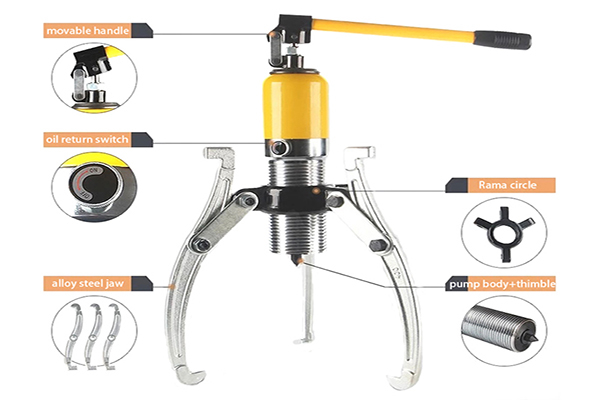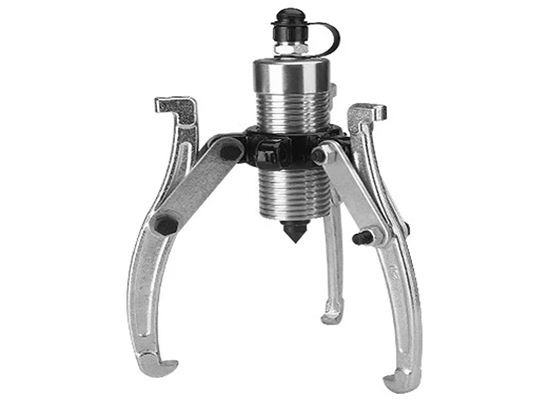Hydraulic puller is a hydraulic tool. The hydraulic puller moves directly forward with the hydraulic starting rod, so the push rod itself does not rotate. The hook jaw base can be adjusted forward and backward directly with the thread. During operation, you only need to swing the handle back and forth slightly, move the hydraulic start lever forward, and the jaws move back relatively to pull the object out.
Features of Hydraulic Puller
- The portable hydraulic puller is easy to operate, labor-saving, trouble-saving, time-saving, small space occupation and easy to carry.
- The 3-jaw hydraulic puller and the 2-jaw hydraulic puller can be disassembled and replaced according to the needs of the site work, the process is simple and the operation is convenient.
- According to the distance between hydraulic puller and the center of piston, the head of puller can be rotated freely, and the center of the pulled workpiece can be quickly touched.
- The split hydraulic puller can be optionally equipped with hydraulic pumps.
- The hydraulic puller is flexible in use, light in weight, small in size and convenient to carry. It is an ideal tool for factories, ships, repair places and other applications.

Types of Hydraulic Pullers
Hydraulic puller is mainly divided into electric puller, electric hydraulic puller, integrated hydraulic puller, split hydraulic puller, screw puller, vehicle-mounted hydraulic puller, etc. Among them, integrated hydraulic puller, split hydraulic puller and vehicle-mounted hydraulic puller are more commonly used in industry.
Split Hydraulic Puller
The split hydraulic puller has a separate hydraulic pump design that users can easily manipulate. It has a built-in safety valve to avoid damage to the puller. It also has a 360° rotatable joint design, allowing users to operate in any direction and angle.
The split hydraulic puller consists of manual/electric hydraulic pump, cylinder, jaws, connecting piece, quick connector, high-pressure oil pipe and top rod. Split hydraulic gear puller has the features of convenient adjustment, light weight and labor saving, and safe operation. This type of hydraulic puller is widely used to disassemble various discs, bearings, gears, couplings, belt pulleys, flanges, etc., and is an ideal tool to substitute traditional pullers.

Applications of Hydraulic Puller
Hydraulic pullers are widely used in important industries, and mechanical equipment required for various infrastructure construction projects, including ports, electric power, steel, shipbuilding, petrochemical, mining, railways, construction, metallurgy and chemical engineering, automobile manufacturing, plastic machinery, industrial control, Highways, bulk transportation, auxiliary pipelines, slope tunnels, shaft treatment and protection, sea rescue, marine engineering, airport construction, bridges, aviation, aerospace, venues, etc.
How to Use a Hydraulic Puller?
- Before using the hydraulic puller, tighten the oil return valve rod in a clockwise direction.
- Adjust the jaw base to the position where jaws can grasp the object to be pulled.
- Tilt the piston starting rod back and forth to move forward steadily, and the jaw hooks back accordingly to pull out the object.
- During operation, if the extension of the piston starting rod is required to be greater than the effective distance of the hydraulic puller piston starting rod, you need to stop when the extension reaches the maximum effective distance, loosen the oil return valve rod, and allow the piston starting rod to retract. After adjustment, repeat steps 1-3 again until the object is pulled out.
- To loosen the oil return valve rod, just slightly loosen the oil return valve counterclockwise. The piston starting rod gradually retracts under the action of the spring.
- Before using the hydraulic puller, it is necessary to estimate how much force is required to pull out the object, and then select a hydraulic puller with suitable specifications. Do not use overweight to avoid damage to the hydraulic bearing puller.
- The working oil of the hydraulic puller should be anti-wear hydraulic oil, which must be clean.

